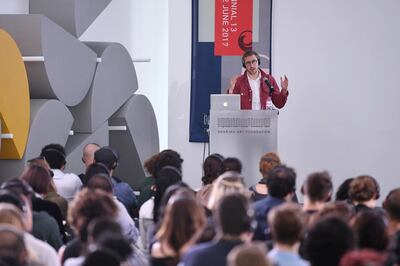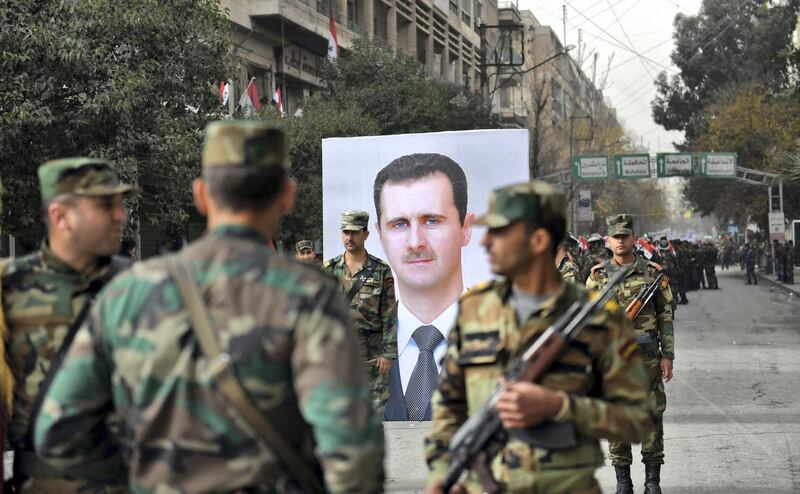The 10th annual report by the Syrian Network for Human Rights (SNHR) makes for some grim reading. Released over the weekend to mark the International Day in Support of Victims of Torture, it lays out in stark, clinical language the top 10 methods used by the Syrian government and other allied and rival factions in the decade-long civil war to torture prisoners and political detainees.
One segment, describing the falqa – a rod whose name is synonymous with corporal punishment in the Arab world for an older generation – reads like a paper describing a scientific experiment or a clinical trial.
The description is appropriate because the Syrian government has turned torture into a science. The report details only the most frequently used torture methods, including electrocution, the tyre (where a person is shoved into a vehicle tyre and beaten), solitary confinement, starvation, exhaustion (through a combination of little to no food and forced labour), the shabeh (hanging from the ceiling by the wrists or feet), beatings, flogging, and forcing detainees to listen to the torture of other prisoners. But more than 70 different forms of torture have been documented through the testimony of survivors and families of victims in Syria, a grim innovative approach to savagery. Ironically, they have been so effective at torture that opposition and extremist groups that operate in Syria and have tortured detainees, albeit at a much smaller scale, have replicated Syrian regime methods.
The report’s figures are also sobering – SNHR has documented the names and identities of at least 14,537 individuals who died under torture between March 2011, when the uprising in Syria broke out, and June 2021, including 180 children and 92 women, the vast majority of whom died in Syrian government custody.
These figures are also great underestimates, partly because SNHR is conservative in its figures. There are tens of thousands of prisoners within the Syrian government’s network of prisons in the various security and intelligence branches at any one time, and a significant portion of the populace has gone through the system. It can be difficult to confirm the cause of death of detainees even though it is almost certainly a result of torture or deliberate medical negligence because the government rarely surrenders the body to the family. It can even take years and tens of thousands of dollars in bribes to even determine the fate of a missing loved one, another cruelty of a system that pays no heed to the value of human life.

The extent of the torture used in Syria negates all doubts that it is systematic. It is industrial in scale, hardly even the province of one central branch or agency, and it is impossible to contemplate its existence and the extent of its depravity and not come to the conclusion that it is part of a deliberate strategy to crush a people’s spirit. Syrian law also protects its perpetrators, by specifically shielding members of the security apparatus from any form of prosecution or accountability for crimes committed by its cadres while discharging their “duties".
Two particular aspects of the report stood out to me, however. The first is the horror of the photographs that accompanied some of the case studies. These are not particularly grisly or violent photographs – unlike the famous Caesar cache of photos smuggled out of the country by a defected military photographer, they mostly don’t show the twisted visages of dead detainees whose bodies are lined up en masse. Instead, they are side-by-side photos of detainees, before and after they were released. Often they are emaciated, their full smiles and bodies turned into husks and brittle, thinned out limbs by the years of torture and deprivation, and even in the photos it looks like their eyes have darkened, a spark that once existed having been burned out.
The other aspect of the report were the little details that came through in individual stories of victims and their families. In one, the report recounts how a mother was finally allowed to visit her son in the notorious Sednaya Prison, where she noticed that his nails had been pulled out. She was not allowed to see him again, only to find out he had died in detention. Somehow, the prospect of hope and it being taken away again feels like a different level of cruelty.
An accounting of the torture methods employed by a brutal totalitarian regime feels like a futile exercise, given 10 years of war and atrocities did little to spark action.
But it is worth considering and contemplating – as the war fades into memory and realpolitik takes hold, with the regime’s survival ensured – that this is what it is. That torture is an essential part of its being. That cruelty and viciousness is in its DNA.





